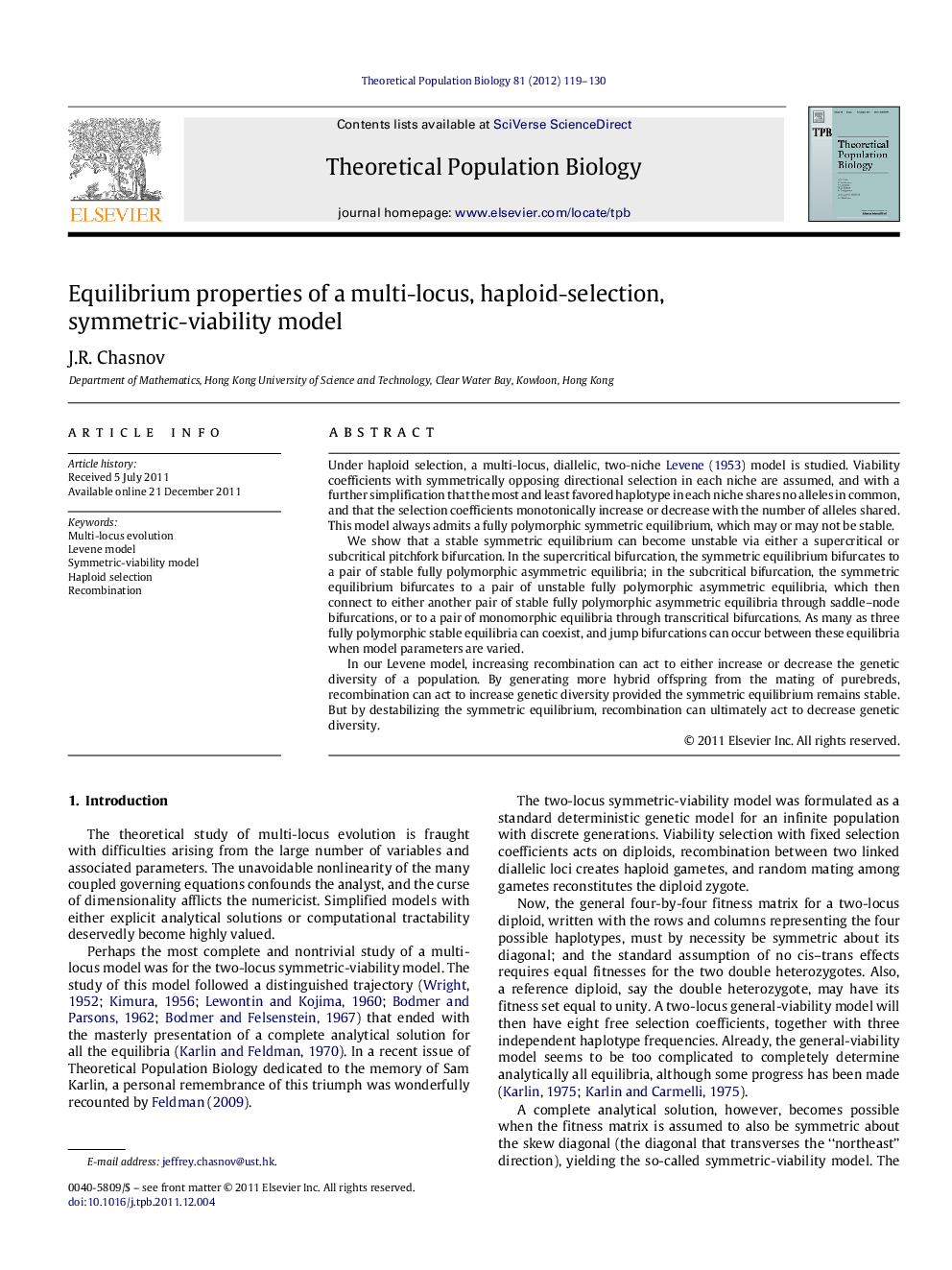| Article ID | Journal | Published Year | Pages | File Type |
|---|---|---|---|---|
| 4502510 | Theoretical Population Biology | 2012 | 12 Pages |
Under haploid selection, a multi-locus, diallelic, two-niche Levene (1953) model is studied. Viability coefficients with symmetrically opposing directional selection in each niche are assumed, and with a further simplification that the most and least favored haplotype in each niche shares no alleles in common, and that the selection coefficients monotonically increase or decrease with the number of alleles shared. This model always admits a fully polymorphic symmetric equilibrium, which may or may not be stable.We show that a stable symmetric equilibrium can become unstable via either a supercritical or subcritical pitchfork bifurcation. In the supercritical bifurcation, the symmetric equilibrium bifurcates to a pair of stable fully polymorphic asymmetric equilibria; in the subcritical bifurcation, the symmetric equilibrium bifurcates to a pair of unstable fully polymorphic asymmetric equilibria, which then connect to either another pair of stable fully polymorphic asymmetric equilibria through saddle–node bifurcations, or to a pair of monomorphic equilibria through transcritical bifurcations. As many as three fully polymorphic stable equilibria can coexist, and jump bifurcations can occur between these equilibria when model parameters are varied.In our Levene model, increasing recombination can act to either increase or decrease the genetic diversity of a population. By generating more hybrid offspring from the mating of purebreds, recombination can act to increase genetic diversity provided the symmetric equilibrium remains stable. But by destabilizing the symmetric equilibrium, recombination can ultimately act to decrease genetic diversity.
